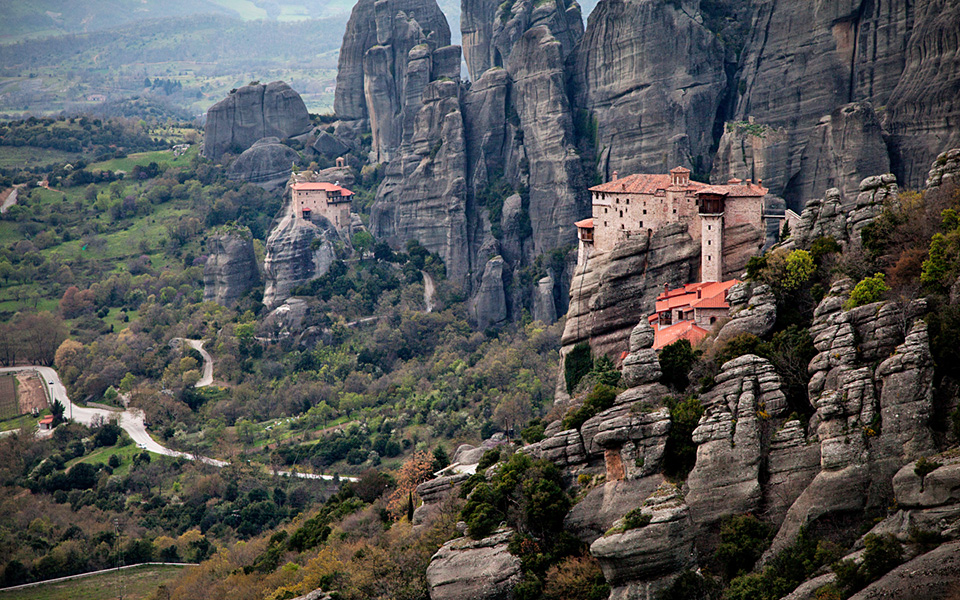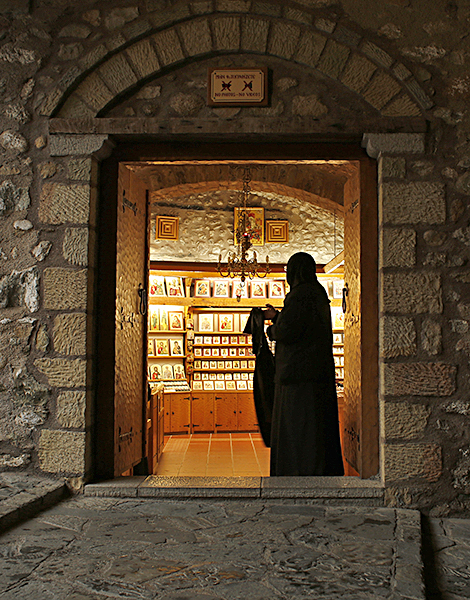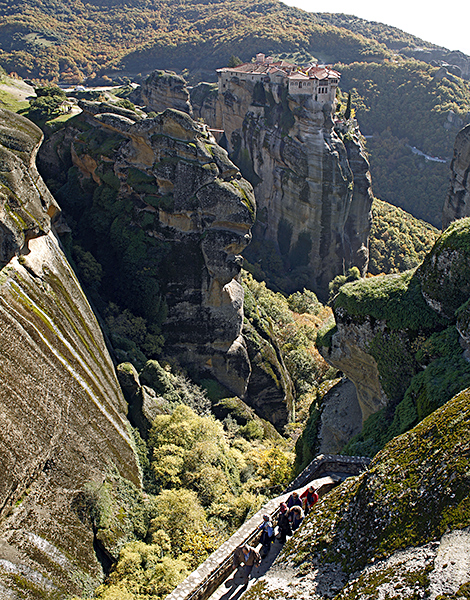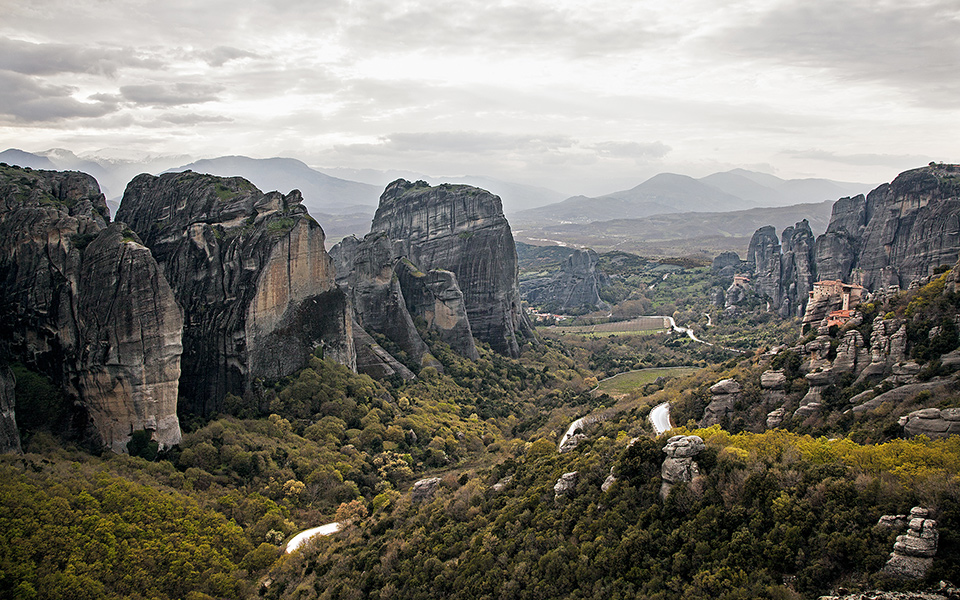Sacred Solitude: Inside the World of Greek Orthodox...
Keepers of stillness and prayer in...

The monasteries at Meteora are built on sandstone rocks. The first monks are believed to have arrived at Meteora during the 11th century.
© Vasilis Tsiolis
The towering rocks topped by age-old monasteries in Meteora, a UNESCO world heritage site, make this destination one of Greece’s key tourist attractions. Visitors from both far and near flock to Meteora to marvel at this unique setting.
The first hermits are believed to have arrived during the 11th century; over time, the monastic communities established here evolved into a well-organized set-up. Today, most of the 24 monasteries located here are now abandoned and dilapidated. Just six remain open to the public.
The Holy Monastery of Great Meteoron is the largest of all. It was founded in the mid-14th century by St. Athanasios the Meteorites, a scholarly monk from Mount Athos. He was succeeded by Saint Joasaph, a Serbian king who was maternally related to the Palaiologos Byzantine imperial family and who abandoned worldly power to become a monk here at the age of around 22.
A fantastic trail begins from Kastraki and ends up at Fylakes Kalogeron (meaning the Monks’ Jail), the name given to a gigantic cave situated 60 meters above ground level. Another route passes by the St. Gregory Cloister and the small St. Nicholas Bantova Kofinas Monastery – believed to date back to the mid-14th century and located at an altitude of 370 meters in a gorge between Kalambaka and Kastraki – and is also a splendid option for a walk.
Six monasteries in Meteora are open to the public: The Holy Monastery of Rousanou, dedicated to “The Transfiguration”; the Holy Monastery of St. Stephen (Stefanos), easily accessed from the road and featuring a charming stone bridge at its entrance; the Holy Monastery of Great Meteoron, also dedicated to the “Transfiguration” and featuring interesting pieces in its museum of manuscripts; the Monastery of the Holy Trinity, featuring an old church dating back to 1475; the Holy Monastery of St. Nicholas Anapausas, adorned with very significant post-Byzantine murals; and the Holy Monastery of Varlaam, maintaining a museum within its old refectory and featuring the wooden Chapel of the Three Bishops.

A sisterhood has been based at Aghios Stefanos since 1961 at the most accessible monastery of all in Meteora. Its entrance is connected to the street by a small stone bridge.
© Nikos Kokkas

The Holy Monastery of Varlaam is one of six monasteries open to the public, along with Holy Monasteries of Rousanou, St. Stephen (Stefanos), Great Meteoron, Holy Trinity and St. Nicholas Anapausas.
© Nikos Kokkas

Panoramic view of the Meteora rocks, one of Greece’s most renowned tourism attractions. It draws visitors from all over the world.
© Vasilis Tsiolis
In the past, the traditional way to reach these monasteries was either by rope ladder or via a manual hoist system that included netting or an enormous basket. Brief black-and-white footage depicting such endeavors from back in the 1920s still exists. The lives of the monks of Meteora featured in foreign press coverage of the period; the English-language magazine “Travel,” for its November 1916 edition, sported on its front cover a picture of the imposing Meteora buttes and two men on horse-heading uphill. Both the old film footage and the magazine are kept in the Greek Education Museum in nearby Kalambaka. In addition to items linked to Meteora, the museum also exhibits a well-presented collection covering Greek education.
Another exceptional museum worth visiting in Kalambaka is the two-in-one Natural History Museum of Meteora & Mushrooms Museum. On show are various stuffed animal species – not hunting trophies – including birds such as the western yellow wagtail, the yellow-eyed white snowy owl and the Egyptian vulture, as well as sculpted replicas of actual mushroom types.
Two more museums are expected to open soon in the Kalambaka-Kastraki area below the buttes – one, a geological museum and the other a sort of mini-planetarium presenting a digital depiction of Meteora.
Meteora is also a renowned rock-climbing destination that draws visitors from around the world. If you would like to test your abilities in this sport, or indulge in other nature-oriented activities, see www.visitmeteora.travel/en.
Keepers of stillness and prayer in...
When the summer crowds depart, Greece’s...
Discover five mountain destinations where crisp...
Join expert guides and trained truffle...